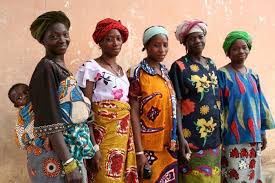SOURCE: 2016 CIA WORLD FACTBOOK AND OTHER SOURCES | |
Page last updated on June 20, 2014Nationality:
noun: Tanzanian(s) adjective: Tanzanian Ethnic groups: mainland - African 99% (of which 95% are Bantu consisting of more than 130 tribes), other 1% (consisting of Asian, European, and Arab); Zanzibar - Arab, African, mixed Arab and African Languages: Kiswahili or Swahili (official), Kiunguja (name for Swahili in Zanzibar), English (official, primary language of commerce, administration, and higher education), Arabic (widely spoken in Zanzibar), many local languages note: Kiswahili (Swahili) is the mother tongue of the Bantu people living in Zanzibar and nearby coastal Tanzania; although Kiswahili is Bantu in structure and origin, its vocabulary draws on a variety of sources including Arabic and English; it has become the lingua franca of central and eastern Africa; the first language of most people is one of the local languages Religions: mainland - Christian 30%, Muslim 35%, indigenous beliefs 35%; Zanzibar - more than 99% Muslim Population: 49,639,138 country comparison to the world: 26 note: estimates for this country explicitly take into account the effects of excess mortality due to AIDS; this can result in lower life expectancy, higher infant mortality, higher death rates, lower population growth rates, and changes in the distribution of population by age and sex than would otherwise be expected (July 2014 est.) [see also: Population country ranks ] Age structure: 0-14 years: 44.6% (male 11,173,655/female 10,962,186) 15-24 years: 19.5% (male 4,838,216/female 4,841,338) 25-54 years: 29.5% (male 7,340,129/female 7,289,483) 55-64 years: 3.5% (male 745,214/female 985,524) 65 years and over: 2.9% (male 629,483/female 833,910) (2014 est.) population pyramid: Dependency ratios: total dependency ratio: 92.4 % youth dependency ratio: 86.1 % elderly dependency ratio: 6.2 % potential support ratio: 16.1 (2014 est.) Median age: total: 17.4 years male: 17.1 years female: 17.7 years (2014 est.) Population growth rate: 2.8% (2014 est.) country comparison to the world: 18 [see also: Population growth rate country ranks ] Birth rate: 36.82 births/1,000 population (2014 est.) country comparison to the world: 17 [see also: Birth rate country ranks ] Death rate: 8.2 deaths/1,000 population (2014 est.) country comparison to the world: 92 [see also: Death rate country ranks ] Net migration rate: -0.57 migrant(s)/1,000 population (2014 est.) country comparison to the world: 136 [see also: Net migration rate country ranks ] Urbanization: urban population: 26.7% of total population (2011) rate of urbanization: 4.77% annual rate of change (2010-15 est.) Major urban areas - population: DAR ES SALAAM (capital) 3.588 million (2011) Sex ratio: at birth: 1.03 male(s)/female 0-14 years: 1.02 male(s)/female 15-24 years: 1 male(s)/female 25-54 years: 1.01 male(s)/female 55-64 years: 0.99 male(s)/female 65 years and over: 0.76 male(s)/female total population: 0.99 male(s)/female (2014 est.) Mother's mean age at first birth: 19.6 note: median age at first birth among women 25-29 (2010 est.) [see also: Mother's mean age at first birth country ranks ] Maternal mortality rate: 460 deaths/100,000 live births (2010) country comparison to the world: 23 [see also: Maternal mortality rate country ranks ] Infant mortality rate: total: 43.74 deaths/1,000 live births country comparison to the world: 49 male: 45.78 deaths/1,000 live births female: 41.64 deaths/1,000 live births (2014 est.) Life expectancy at birth: total population: 61.24 years country comparison to the world: 190 male: 59.91 years female: 62.62 years (2014 est.) Total fertility rate: 4.95 children born/woman (2014 est.) country comparison to the world: 17 [see also: Total fertility rate country ranks ] Contraceptive prevalence rate: 34.4% (2009/10) [see also: Contraceptive prevalence rate country ranks ] Health expenditures: 7.3% of GDP (2011) country comparison to the world: 78 [see also: Health expenditures country ranks ] Physicians density: 0.01 physicians/1,000 population (2006) [see also: Physicians density country ranks ] Hospital bed density: 0.7 beds/1,000 population (2010) [see also: Hospital bed density country ranks ] Drinking water source: improved:
urban: 77.9% of population
rural: 44% of population
total: 53.2% of population
unimproved:
urban: 22.1% of population
rural: 56% of population
total: 46.8% of population (2012 est.)Sanitation facility access:
improved:
urban: 24.9% of population
rural: 7.5% of population
total: 12.2% of population
unimproved:
urban: 75.1% of population
rural: 92.5% of population
total: 87.8% of population (2012 est.)HIV/AIDS - adult prevalence rate:
5.1% (2012 est.) country comparison to the world: 13 [see also: HIV/AIDS - adult prevalence rate country ranks ] HIV/AIDS - people living with HIV/AIDS: 1,472,400 (2012 est.) country comparison to the world: 7 [see also: HIV/AIDS - people living with HIV/AIDS country ranks ] HIV/AIDS - deaths: 80,000 (2012 est.) country comparison to the world: 4 [see also: HIV/AIDS - deaths country ranks ] Major infectious diseases: degree of risk: very high food or waterborne diseases: bacterial diarrhea, hepatitis A, and typhoid fever vectorborne diseases: malaria, dengue fever, and Rift Valley fever water contact diseases: schistosomiasis and leptospirosis animal contact disease: rabies (2013) Obesity - adult prevalence rate: 5% (2008) country comparison to the world: 156 [see also: Obesity - adult prevalence rate country ranks ] Children under the age of 5 years underweight: 16.2% (2010) country comparison to the world: 44 [see also: Children under the age of 5 years underweight country ranks ] Education expenditures: 6.2% of GDP (2010) country comparison to the world: 37 [see also: Education expenditures - percent of GDP country ranks ] Literacy: definition: age 15 and over can read and write Kiswahili (Swahili), English, or Arabic total population: 67.8% male: 75.5% female: 60.8% (2010 est.) School life expectancy (primary to tertiary education): total: 9 years male: 9 years female: 9 years (2012) Child labor - children ages 5-14: total number: 2,815,085 percentage: 21 % note: data represents children ages 5-17 and does not in (2006 est.) Unemployment, youth ages 15-24 total: 7.1% (2011) country comparison to the world: 129 NOTE: The information regarding Tanzania on this page is re-published from the 2016 World Fact Book of the United States Central Intelligence Agency. No claims are made regarding the accuracy of Tanzania PEOPLE 2016 information contained here. All suggestions for corrections of any errors about Tanzania PEOPLE 2016 should be addressed to the CIA. |











